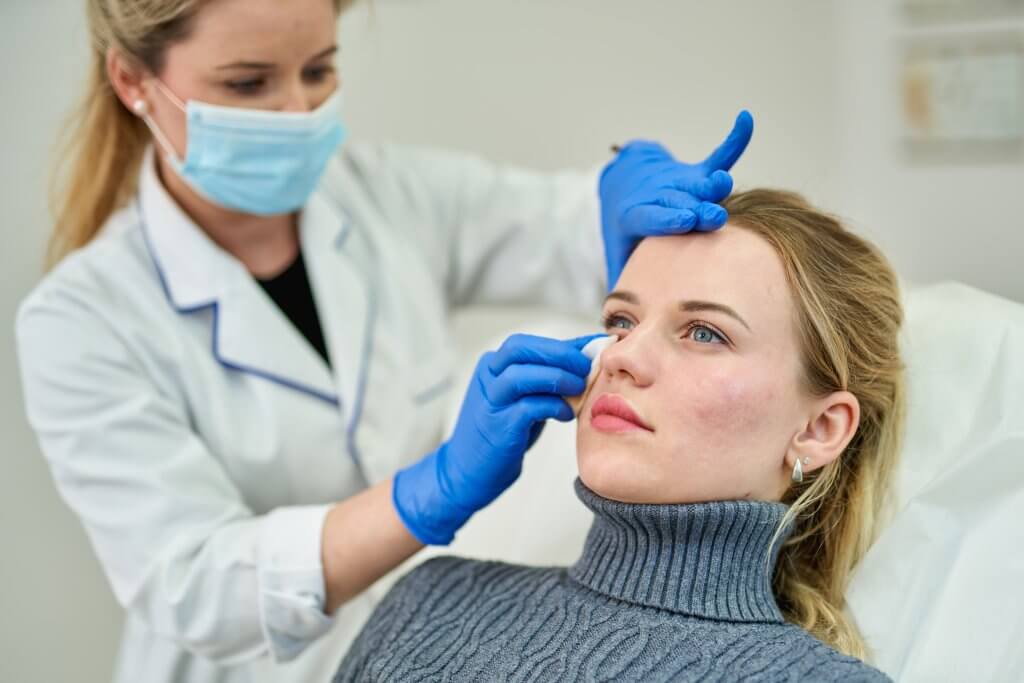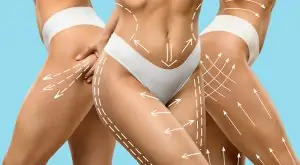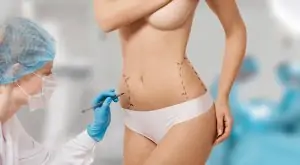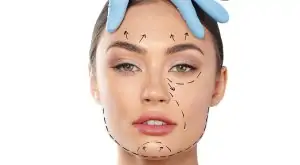Rhinoplasty is a surgical procedure performed to improve respiratory functions and achieve an aesthetic appearance that is compatible with facial features. Today, many people prefer to have rhinoplasty surgery to eliminate breathing difficulties, correct deformities in the nasal structure, or complete facial aesthetics.
Turkey is a globally recognized name in the field of rhinoplasty with its advanced technologies, versatile surgical techniques, and experienced staff. Thanks to rhinoplasty procedures planned and meticulously implemented by expert and experienced plastic surgeons in their fields, it is possible to achieve reliable and successful results for both local patients and foreign patients coming for health tourism.
Open Rhinoplasty
Open rhinoplasty is performed by making a small incision in the tissue called the columella between the nostrils. Since the surgeon can directly see the nasal structure with this technique, he can perform more controlled and precise interventions in complex deformities. Open rhinoplasty is a preferred method for nasal tip shaping, advanced septum deviations, and revision surgeries. Although the incision made in the open rhinoplasty technique is visible from the outside, which carries the risk of temporary scarring, these scars are almost completely erased after a healthy healing process.
Closed Rhinoplasty
Closed rhinoplasty is performed with incisions made from the inside of the nostrils. This technique does not leave a visible scar on the outside. Since the intervention area is limited, it is generally suitable for mild deformities or aesthetic touches. The healing process is usually faster. Since the field of vision is more limited than in open rhinoplasty, the surgeon’s experience is very important in open rhinoplasty.
Ultrasonic Rhinoplasty
Ultrasonic rhinoplasty is performed with a device called Piezo. The device, which emits high-frequency vibrations, shapes the bone without cutting it. Since the technique is applied with minimal damage to the tissue, bruising and edema formation are reduced. It is possible to reshape the nasal bones symmetrically during aesthetic intervention. This method is especially preferred for nasal hump corrections.
Controlled interventions can be made on the bone structure with Piezo technology. Unlike other surgical methods, it allows working on the bone structure without damaging the surrounding tissues. It is widely used in bone corrections that require precision and revision rhinoplasty surgeries.
Revision Rhinoplasty
Revision rhinoplasty is applied to correct previously performed rhinoplasty surgeries that did not produce the desired results. It is preferred in cases such as deformity or breathing problems after the first surgery. Revision surgeries are generally more difficult. Because it is applied to correct structural changes caused by previous procedures. The surgeon’s experience and a detailed preliminary evaluation process are required for a successful result.

Ethnic Rhinoplasty
Ethnic rhinoplasty aims to provide an aesthetic appearance while preserving the person’s ethnic structure. Ethnic rhinoplasty surgery is usually preferred by individuals of African, Asian, Middle Eastern or Latin American origin. Procedures such as nasal tip lift, nasal dorsum lift or nostril narrowing are prominent in ethnic rhinoplasty. Preserving the natural appearance is the main goal in these procedures.
Functional Rhinoplasty
Functional rhinoplasty aims to solve breathing problems in addition to aesthetic intervention. It is applied in cases such as septum deviation, turbinate hypertrophy or nasal valve insufficiency. In the procedure, which aims to ensure that the nasal functions work healthily with aesthetic gain, planning is done by evaluating both external and internal nasal structures.
Rhinoplasty for Men
Rhinoplasty procedures performed on men are planned differently than on women. Since a flatter, masculine and natural nasal profile is generally aimed, excessive thinning of the nasal dorsum or excessive lifting of the nasal tip is not suitable for men. In order to achieve successful results in male rhinoplasty, proportions appropriate to the person’s facial features should be made.
Rhinoplasty for Women
In rhinoplasty applications specific to women, the main goal is to provide aesthetic softness and create an elegant profile. Details such as a slightly curved nasal dorsum and a raised nasal tip are frequently requested features in female rhinoplasty. Aesthetically satisfying and natural results can be achieved by making personalized plans considering the general aesthetic integrity of the face.
How to Choose the Type of Rhinoplasty?
In determining the type of rhinoplasty, the person’s needs, nasal structure and expectations are taken into consideration. The functional and aesthetic status of the nose is evaluated in the first examination. The surgeon recommends the most appropriate method according to the desired result. In some cases, a combination of more than one method may be necessary. The goal is to provide both an aesthetically pleasing appearance and healthy breathing function.
Interest in Rhinoplasty is Increasing in Turkey
Turkey is one of the leading countries in terms of technical aspects, patient satisfaction and surgical success rates in rhinoplasty. Thanks to its advanced surgical infrastructure, experienced plastic surgeons and conditions suitable for health tourism, many people from different countries prefer Türkiye. The meticulous execution of pre- and post-operative processes are the factors that make Turkey an attractive destination in this field.
At this point, rhinoplasty in Türkiye is an aesthetic surgery field that draws attention with its diversity and success rates. Many different techniques, from open rhinoplasty to Tip Plasty, are applied with special plans according to personal needs. Different types of rhinoplasty should be evaluated under the supervision of a specialist for those who want to achieve a natural and balanced nose appearance that suits their facial features.








